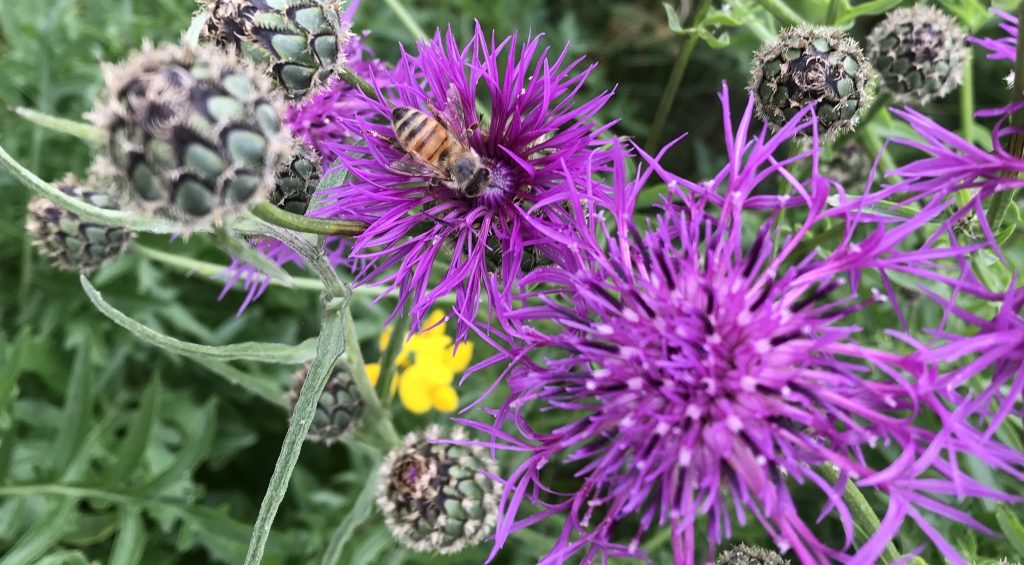
DIO works alongside many partners and stakeholders, including the Bumblebee Conservation Trust, Buglife and Praise Bee on projects to support and protect pollinator habitats, as well as species such as native black honey bees, and red mason bees.
No-mow zones thrive with bees
DIO manages approximately 225,000 hectares of land in the UK and our ecologists, regional delivery teams and contractors all play a huge role in identifying, protecting and improving habitats to support the National Pollinator Strategy.
One of the projects we trialled is a no-mow zone at Westdown Camp on Salisbury Plain. I recently worked with our training estate contractors and Landmarc Support Services to identify areas where mowing could be reduced, allowing flowers to flourish and pollinators to thrive. This has been a great success and parts of the camp came alive with pollinators including the brown-banded carder bee, a UK priority species. DIO is now working with Landmarc to roll this initiative out across the Defence estate.
Praise Bee project increases Mason Bees
The Praise Bee project was set up at RAF Shawbury to increase the local population of mason bees using artificial nests and creating new breeding sites. The trial proved to be a success and this project has now been expanded to other parts of the MOD, including the Royal Military Academy at Sandhurst, MOD Abbey Wood and Defence Munitions Gosport, which are all providing homes for bees.
Monitoring bumblebees
We also launched a programme with the MOD’s Pembrokeshire Conservation Group, the Bumblebee Conservation Trust and Landmarc to monitor bumblebees at Castlemartin Ranges, to find out how they use nectar across the site. The results have shown that Castlemartin retains a good diversity of bumblebees, including the shrill carder bumblebee, another UK priority species.

2 comments
Comment by M Dixon posted on
The MOD has been a leader in its environmental stewardship of the defence estate and this is another excellent example of practical support for wider environmental benefit. Providing support for our many varieties of bees is important for species diversity and for sustaining our national food chain. The DIO's continuing efforts will be much appreciated. Congratulations on this important initiative from an RAF veteran, sustainability consultant, and a novice beekeeper in his second season.
Comment by DIO Communications Team posted on
Thank you!